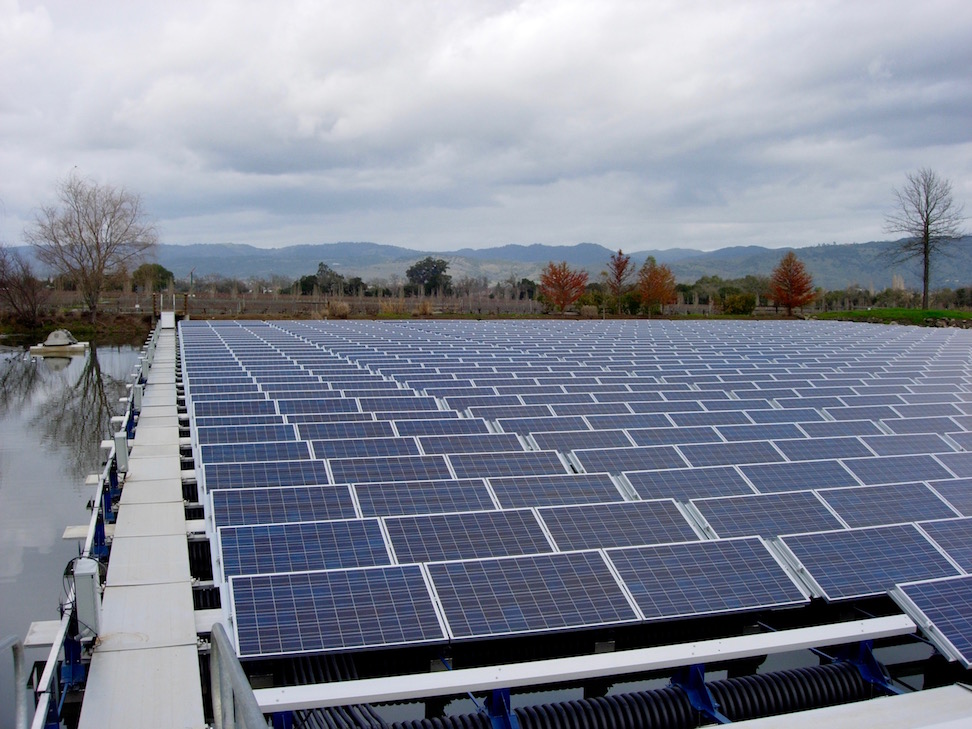Quick Summary
- Siting solar on buildings, water reservoirs, contaminated and salt-affected lands could spare prime agricultural and natural spaces
- Underused lands in Central Valley alone could exceed 2025 electricity demands for California up to 13 times
Unconventional spaces could be put to use generating renewable energy while sparing lands that could be better used to grow food, sequester carbon and protect wildlife and watersheds, says a study led by the University of California, Davis.

These land-sparing spaces include: 1) built environments, such as rooftops 2) salt-affected land 3) contaminated land, and 4) water reservoirs with floating solar arrays, or “floatovoltaics.”
The study, published today in the journal Environmental Science & Technology, notes that unique technical, economic and institutional barriers exist for each land type. But with more incentives that encourage renewable energy development on these lands, they could more than meet state energy demands.
Could exceed energy demand
The study focuses on the Central Valley, a globally significant agricultural region encompassing about 15 percent of California. The research found that using these land-sparing site types in the Central Valley alone could exceed the state’s projected 2025 electricity demands up to 13 times for photovoltaics and up to two times for concentrated solar power.
“In the era of looming land scarcity, we need to look at underused spaces,” said corresponding author Rebecca R. Hernandez, an assistant professor in the Department of Land, Air and Water Resources at UC Davis. “This paper provides a menu of sorts for farmers, agricultural stakeholders and energy developers to think about energy projects on spaces that don’t require us to lose prime agricultural and natural lands, which are becoming increasingly limited.”
Reducing environmental trade-offs
The study underscores the potential of siting renewable energy projects while largely avoiding the environmental trade-offs that often accompany energy sprawl and climate change mitigation.

The study’s additional authors include lead author Madison Hoffacker of UC Davis and also affiliated with UC Berkeley and UC Riverside, and Michael Allen of UC Riverside.
The study was funded by Center for Conservation Biology at UC Riverside; Schneider Climate and Energy Fellowship, through Stanford University and Audubon California; Agricultural Experiment Station Hatch Project; California Energy Commission; and UC Davis.
Media Resources
Rebecca R. Hernandez, UC Davis Land, Air and Water Resources, 530-752-5471 , rrhernandez@ucdavis.edu
Kat Kerlin, UC Davis News and Media Relations, 530-750-9195, kekerlin@ucdavis.edu
